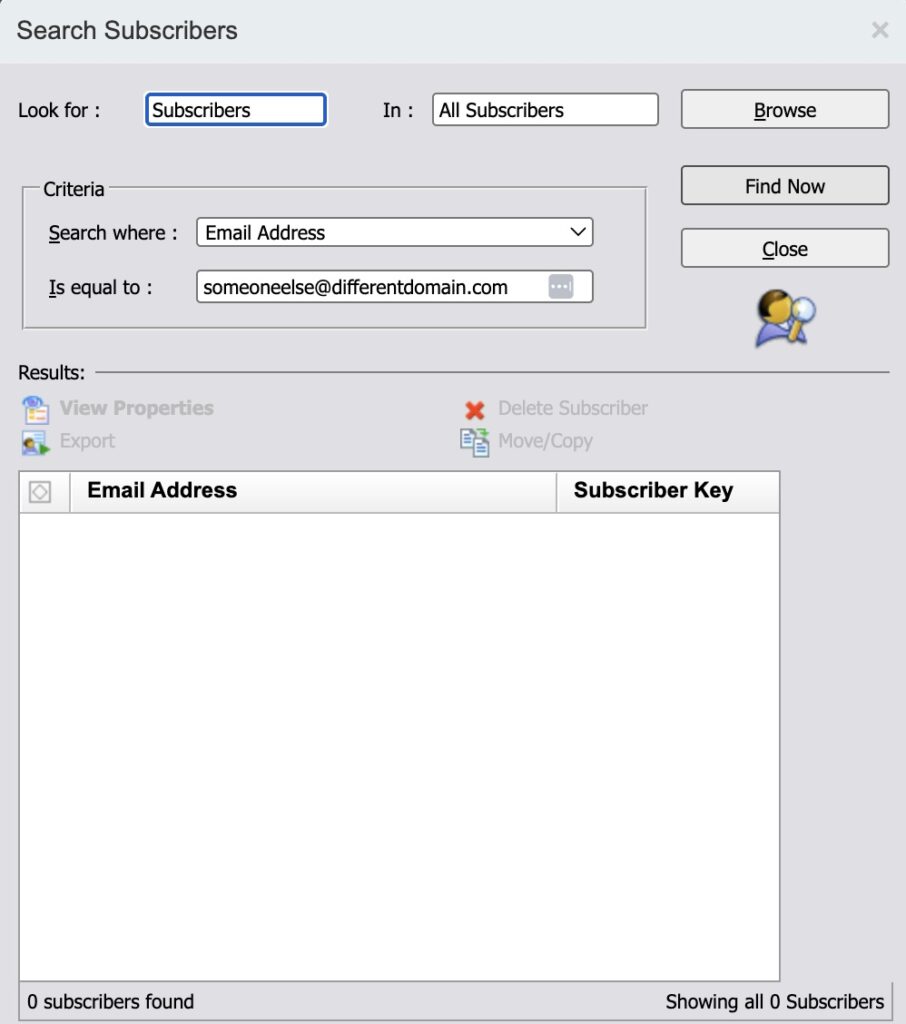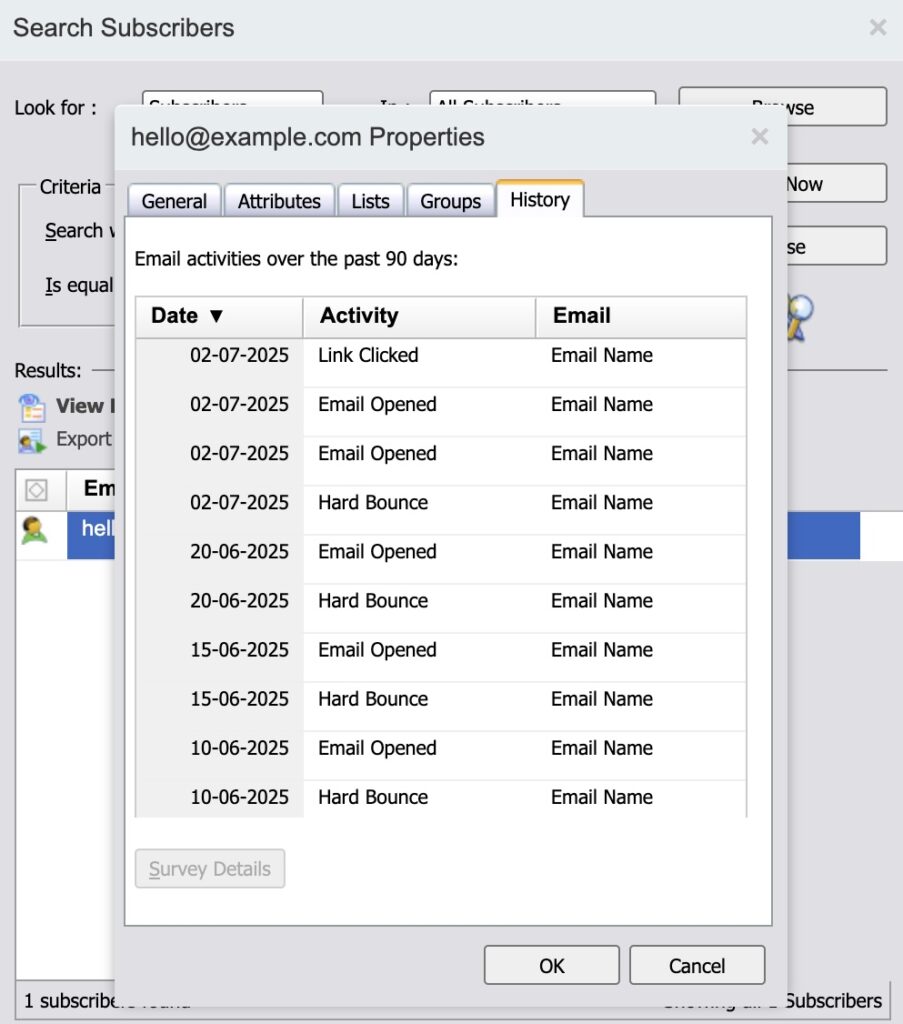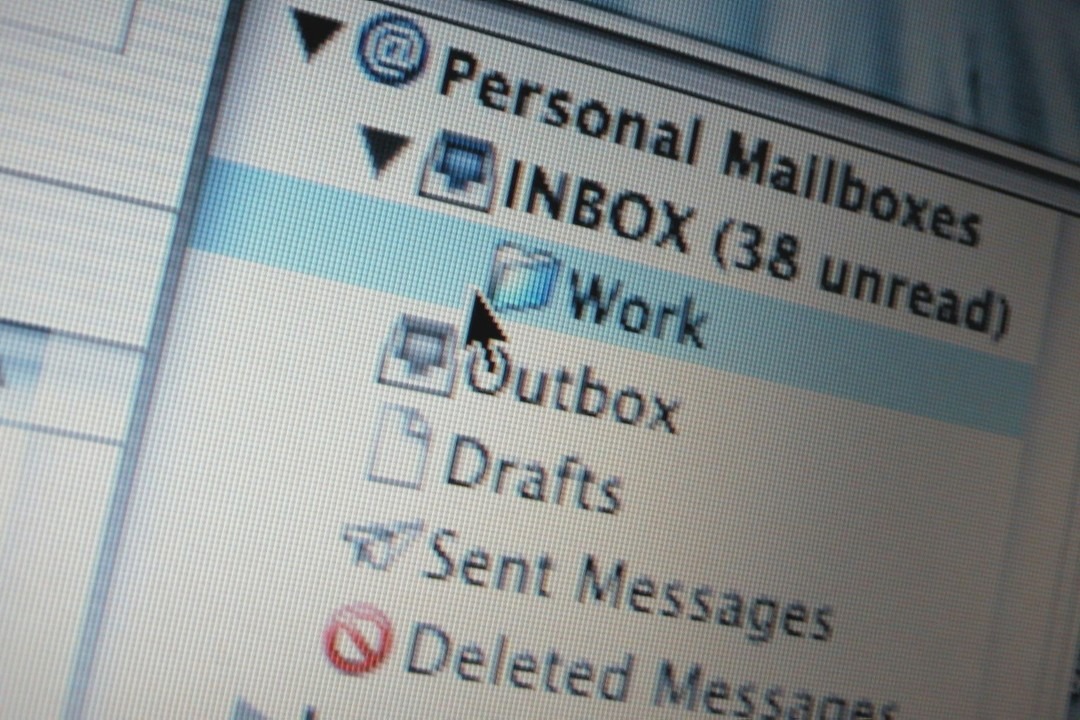Have you ever heard about asynchronous hard bounces? I hadn’t – until today. In a recent Salesforce Marketing Cloud (SFMC) send, I encountered a puzzling scenario: a subscriber with the email hello@example.com who shows consistent engagement (multiple opens and even clicks) yet also registers consistent hard bounces for every send. To make it stranger, the SMTP bounce messages reference someoneelse@differentdomain.com – an address that isn’t even in our All Subscribers list! How can an active, clicking subscriber also be hard bouncing, and who on earth is this someoneelse@differentdomain.com?
In this post, we’ll unravel this real-world use case, explain what asynchronous bounces are and why they occur (especially with forwarded emails), and how SFMC’s bounce handling logic ties everything together. We’ll also discuss why seeing engagement alongside bounces is possible (and sometimes normal), and provide guidance on how you should handle such confusing situations.
I want to thank the crew in #email-deliverability channel on Email Geeks Slack community, for invaluable insights pointing me in the right direction, which resulted in hour long trip down the rabbit hole of asynchronous hard bounces 🤣 – but hey! Now I know enough to share this with you!
Reconstructing the Scenario: Bounces with a Mismatched Email
Let’s set the stage with what we observed in SFMC:
- Subscriber:
hello@example.com– Appears to be an active subscriber who opens emails and clicks links regularly. - Bounce Logs: Every email send to this subscriber results in a hard bounce record. The bounce reason is always “User Unknown”, and notably the SMTP error message mentions an address at a different domain.
- Mismatched Address: The bounce message contains
someoneelse@differentdomain.comas the address that was rejected for delivery, even though our subscriber’s email ishello@example.com. That other address does not belong to any subscriber in our system.
To verify the mystery address, we searched All Subscribers for someoneelse@differentdomain.com:

As expected, SFMC has no record of that email – it’s not a known subscriber. Meanwhile, looking at the hello@example.com subscriber’s activity history, we see interleaved engagement and bounce events:

In the SFMC Bounce Data View, the entries for this subscriber’s bounces look like this (excerpted):
BounceCategory: Hard bounce (User Unknown); BounceType: delayed;
SMTPBounceReason: 5.1.1 <someoneelse@differentdomain.com>: Recipient address rejected: User unknownNotice how the BounceType is “delayed” and the SMTP error 5.1.1 explicitly calls out the someoneelse@differentdomain.com address. “Delayed” bounce type is SFMC’s term for an asynchronous bounce, meaning the bounce was not an immediate refusal during the send, but came later. So what exactly is an asynchronous bounce, and why would it mention an address that isn’t our subscriber?
What Are Asynchronous Bounces?
Asynchronous bounces are bounce messages that occur after the initial email delivery attempt appeared successful. In contrast to a synchronous bounce (where the recipient’s mail server rejects the message during the SMTP transaction), an asynchronous bounce comes as a separate message, often minutes or even days later, indicating a delivery failure after the fact. In other words, “a bounce is an asynchronous failure, meaning the email makes it to the recipient’s server and fails sometime after that”. The receiving server initially accepted responsibility for the email, but later found it could not deliver to the intended recipient and thus generated a bounce notification email back to the sender.
Because these failure notices aren’t synchronized with the original send, they can arrive well after the send (hence “delayed” in the SFMC logs). They are sometimes called NDRs (non-delivery reports) or DSNs (delivery status notifications). Asynchronous bounces are common in certain scenarios. Most notably email forwarding. That brings us to the likely cause of our mystery.
Why Forwarded Emails Cause “Unexpected” Bounces
The scenario with hello@example.com strongly suggests an email forwarding chain at play. Here’s a plausible explanation:
- Forwarding in Action: The subscriber’s address (hello@example.com) might be forwarding incoming emails to another address, perhaps intended to be someoneelse@differentdomain.com. This could happen if, for example, the subscriber set up an automatic forward to a personal or new work email, or if hello@example.com is an alias/distribution list that includes someoneelse@differentdomain.com among its recipients.
- Non-Existent Target: Unfortunately, the target address: someoneelse@differentdomain.com is not valid (user “someoneelse” doesn’t exist at that domain). So when example.com’s mail server tries to forward the email, the differentdomain.com mail server rejects it with a “550 5.1.1 User unknown” error.
- Asynchronous Bounce Generated: Since the original message was accepted by the first server, the failure happens afterward. The first server (or an intermediate server) generates a bounce message to inform the original sender of the delivery failure. Importantly, that bounce message references the address that failed (someoneelse@differentdomain.com) as the reason.
- Original Sender Receives Bounce: Who is the “original sender” in this context? It’s not you personally; it’s your SFMC sending domain. Specifically, SFMC uses a Return-Path (also known as the envelope sender or bounce address) for each outbound email. The bounce notification is sent to that Return-Path address. This is why SFMC sees a bounce and logs it, even though the failure happened downstream of the initial recipient.
To summarize, hello@example.com likely forwarded the email to someoneelse@differentdomain.com (which doesn’t exist), causing a bounce back to SFMC. The bounce log dutifully recorded the failed address in the SMTP reason text, hence the confusing appearance of an unknown email. This type of bounce is called “asynchronous” because it wasn’t part of the initial send transaction, but rather a later notification.
How SFMC Links the Bounce to the Right Subscriber
You might wonder: how does SFMC know that the bounce it received (which mentions someoneelse@differentdomain.com) is related to our subscriber hello@example.com? The magic lies in the Return-Path (or bounce address) that SFMC uses when sending emails.
When SFMC sends an email, it doesn’t use the friendly “From” address as the envelope sender. Instead, it uses a specialized Return-Path address on its own bounce domain (e.g. something like bounce.yourSAPsubdomain.com). This address is unique to each email/job and often encodes information about the recipient or job. This technique is akin to Variable Envelope Return Path (VERP). Essentially, SFMC is embedding a subscriber identifier (and send identifier) into the Return-Path for each message.
So, when a bounce message comes back, it’s addressed to SFMC’s system (via that coded Return-Path). SFMC reads the address and can determine which subscriber and which send it corresponds to. That’s how the platform knows to log the bounce under hello@example.com’s record, even though the bounce content refers to a different address. The bounce was associated to hello@example.com through the hidden envelope sender details.
(If you’re interested in the technical details, VERP is an industry-standard approach where the MAIL FROM is unique per recipient. Explained quite well by Al Iverson)
Critically, this also means the bounce did not go to hello@example.com (even though it was hello@example.com forwarding the email) – it went to SFMC’s systems. hello@example.com likely has no idea a bounce occurred at all.
Why Opens and Clicks Still Happened
One perplexing aspect of our case was that hello@example.com showed normal engagement (opens/clicks). How could they interact with an email that supposedly “bounced”? There are a few possible explanations, all rooted in how forwarding was configured:
- Local Copy + Forward: The hello@example.com account might have been set to forward a copy to someoneelse@differentdomain.com, while still keeping the original message. In many mail systems, users can forward incoming mail to another address but also retain it in the original mailbox. If that’s the case, hello@example.com did receive and keep the email (allowing the user to open it), but the forwarded copy to someoneelse bounced back. This fits the pattern: the subscriber (or someone with access to that mailbox) opened and clicked the email, generating tracking events, and the invalid forwarded address triggered the bounce.
- Distribution List or Alias: It’s possible hello@example.com is a distribution list or group address. Maybe it forwards to multiple recipients internally, one of which was someoneelse@differentdomain.com (perhaps an outdated external address for a former employee, etc.). All the valid recipients on the list got the email and could have engaged with it, but the one invalid address caused a bounce message. SFMC would still tie the bounce to the list address (hello@example.com) since that was the original send target.
- Multiple Forwarding Hops: In complex setups, an email might be auto-forwarded through multiple accounts. For instance, hello@example.com could forward to interim address A, which then forwards to B, and that fails. In such multi-hop scenarios, as long as the failure occurs down the line, the bounce comes back to the original sender (SFMC) and the original recipient might have a copy at one of the earlier hops.
In all these cases, the key point is: hello@example.com did get the email (hence the open/click), but some forwarding attempt to someoneelse@differentdomain.com failed (hence the bounce). This results in seemingly contradictory data, but each piece has its explanation. From SFMC’s perspective, this is actually expected behavior – it’s capturing the fact that part of the delivery (to a forwarded address) failed, even though the primary recipient could still engage.
It’s important to recognize that an email being reported as “bounced” in SFMC doesn’t always mean the subscriber never saw it. As we see here, bouncing and engagement can coexist for the same subscriber under certain conditions. Forwarding is the usual suspect when you see a Bounce Category like “Hard bounce – User Unknown” paired with an engaged subscriber.
Asynchronous Bounces are Normal (SMTP is Working as Designed)
At first glance, an asynchronous bounce like this might make you think something is wrong with SFMC or the send but in fact, this is normal SMTP behavior. Many email servers (including big providers like Gmail, Yahoo, corporate mail servers, etc.) will accept mail and then generate a later bounce if needed. They do this especially to support forwarding and aliasing without penalizing the original sender at the time of send. Industry experts note that asynchronous bounces are a legitimate practice, even if they introduce complexities such as “backscatter”, because sometimes a server only discovers a delivery issue after acceptance. In our case, the intermediate server accepted the message for hello@example.com and only found out later it couldn’t deliver to the forwarded address, so it kindly let us know via a bounce message.
From SFMC’s perspective, it correctly logged the bounce. The platform is behaving exactly as it should: it attempted delivery, got a success from the first hop, then later received a failure notice and recorded it. The reference to someoneelse@differentdomain.com in the SMTP bounce reason is a clue that the failure happened on a forwarded/relayed delivery. This is a classic asynchronous bounce scenario – nothing is “broken” in SFMC’s processing.
Handling These Scenarios: Guidance for You Working with SFMC
When you come across a situation like this, here are some practical tips on how to proceed:
- Don’t Panic. Investigate Context: If you see a bounce reason that mentions an unknown address or domain, consider the possibility of forwarding. Check the subscriber’s domain: is it a corporate or personal domain known to forward email? Review their activity history; if they have opens/clicks for the same sends that bounced, that’s a strong indicator of forwarded email bounces. In our case, noticing the mismatch in bounce address and the simultaneous opens was the giveaway.
- Confirm Subscriber Status: Look at the subscriber’s status in All Subscribers. Are they still Active or marked as Bounced/Held? SFMC will automatically handle the status based on bounce patterns. In our example, because the subscriber continued to bounce repeatedly, SFMC may eventually flip them to Held status (more on this below). If the status is Held, it means SFMC has stopped sending to them proactively.
- When to Ignore: Often, these asynchronous bounces due to forwarding can be safely ignored, especially if the subscriber is still engaging. The presence of opens/clicks means the person is getting your emails (at least via one path). Removing or suppressing them immediately might be premature. Instead, monitor their bounce count and status. It could be a temporary situation (e.g., the subscriber fixes their forwarding rule or the invalid address is removed from a distribution list).
- When to Act: If the subscriber is important (e.g., a client or key customer) and you have the means, you might reach out to confirm their best email address. The forwarding to a dead address suggests something is misconfigured on their side. They might appreciate knowing, in case they’re unaware their forward isn’t working. Alternatively, if the bounces continue and the subscriber shows no further engagement, it could mean they actually aren’t receiving emails anymore (perhaps the forward was the only way they read them). In that case, it might be worth proactively suppressing or contacting through another channel.
- Rely on Bounce Automation: Salesforce Marketing Cloud has built-in bounce mail management that will handle chronic bounces for you. By default, SFMC will automatically move a subscriber to a Held (Undeliverable) status after a certain number of bounces in a timeframe. For example, after the third soft bounce, a subscriber’s status is set to Held. In the case of hard bounces like “User Unknown”, SFMC typically uses a “three strikes” rule as well (unless the ISP’s feedback is trusted and indicates a bad address immediately). If a subscriber bounces in three separate sends and the first bounce was recent, they’ll be marked Undeliverable (Held) and SFMC will stop sending to them. This process is automatic. You usually do not need to manually delete or suppress such addresses one by one. Our
hello@example.comexample had many hard bounces over months; SFMC’s automation would likely kick in by the third bounce within a 15-day period to prevent further sends, changing their status to Held. - Check Bounce Data for Patterns: Use Data Views (_Bounce, _Sent, _Open, etc.) or Tracking Extracts to see the timing of bounces vs opens. If opens always precede bounces, it reinforces the forwarding theory (email opened by the actual user, then bounced by a forwarded attempt). This can bolster your decision to not immediately remove the subscriber.
- Document the Case: It’s a good practice to document odd cases like these in your org’s knowledge base. That way, if colleagues see an odd “someoneelse@domain” in bounce logs or an engaged subscriber marked bounced, they can recognize it as a likely forwarded asynchronous bounce scenario.
Above all, understand that SFMC is behaving correctly here. The platform is logging exactly what happened: part of the delivery failed. The subscriber’s unusual pattern (opens + bounces) doesn’t mean SFMC is mixing up subscribers or recording false data, it means the email delivery had an extra twist (forwarding).
Conclusion: A Quirk, But Not a Bug
Asynchronous hard bounces can be bewildering when you first encounter them – an engaged subscriber who “bounces” due to an unknown address is certainly not an everyday situation. But as we’ve learned, this phenomenon often boils down to standard email forwarding behavior and the way SMTP handles delivery failures after acceptance. SFMC engineers and architects should take comfort that this is normal. The platform’s bounce management and tracking are doing their job in capturing these events.
When you face similar cases, approach them methodically: check if the bounce reason hints at a forwarded address or different domain, confirm the subscriber’s activity and status, and leverage SFMC’s own bounce logic to guide your response. In many cases, no action is needed other than understanding what happened. If the subscriber remains active, you can continue as usual (SFMC won’t suppress them until the bounce count warrants it). If they do get auto-suppressed (Held status) after repeated bounces and you know the subscriber is legitimate, you might decide to intervene (e.g., update their address if you have a better one, or advise them to fix their forwarding).
Finally, always remember that email is more complex under the hood than it appears on the surface. Bounces can come from intermediate servers, and an email’s journey may involve multiple hops where things can go awry. SFMC’s robust bounce handling (see Salesforce’s documentation on Bounce Mail Management) is built to navigate these nuances. Trust the system to do its work! It will automatically suppress truly undeliverable addresses over time, ensuring your deliverability isn’t harmed.
So the next time you see a mysterious bounce for an address you never sent to, you’ll know: it just might be an asynchronous bounce from a forwarded email. Mystery solved!
